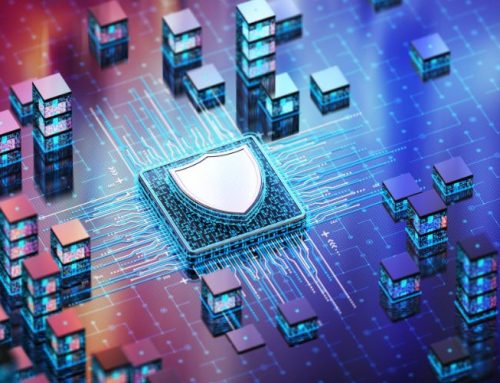The digital age has transformed how businesses operate, resulting in unprecedented convenience and efficiency. However, this reliance on technology has resulted in an extensive number of cybersecurity threats that can endanger a company’s sensitive data and operational continuity. From the cunning tactics of phishing attacks to the devastating impacts of ransomware attacks, understanding these cyber threats is crucial. This comprehensive guide delves deeply into the several types of cybersecurity threats that businesses face today and highlights the importance of proactive cyber-attack prevention measures.
1. Phishing : The Gateway to Cyber Attacks
Phishing attacks are some of the most common cybersecurity threats. Cybercriminals use fake emails, messages, or websites to trick people into disclosing sensitive information like passwords, credit card numbers, or other personal data. These attacks are often camouflaged as official communications from trusted entities, making them especially effective.
Key Characteristics :
- Often involves fake emails or websites.
- Targets sensitive information.
- Relies on social engineering techniques.
Defensive Measures :
- Education and Training : Regularly train employees to recognize and report phishing attacks. Awareness programs can significantly reduce the possibility of a successful attack.
- Email Filtering and Anti-Phishing Tools : Use advanced email filtering solutions to detect and block phishing attacks before they reach the end user.
- Multi-Factor Authentication (MFA) : Implement MFA to add an extra layer of security, ensuring that even if credentials are compromised, unauthorized access is still prevented.
2. Malware : The Invisible Invader
Malware, short for malicious software, includes viruses, worms, trojans, and spyware. These programs may break into systems, causing damage, stealing data, or even giving the attacker remote access.
Common Types of Malwares :
- Viruses : Attach themselves to legitimate files and spread when the infected file is executed.
- Worms : Replicate themselves to spread across networks, often exploiting security vulnerabilities.
- Trojans : Hide themselves as harmless applications, but once executed, they perform malicious actions.
- Spyware : Secretly monitors user activity and gathers sensitive information, often without the user’s knowledge.
Defensive Measures :
- Regular Software Updates : Ensure all systems and software are up to date with the latest security patches.
- Comprehensive Security Solutions : Utilize a combination of antivirus, anti-malware, and anti-spyware tools for a robust defense.
- Network Segmentation : Implement network segmentation to limit the spread of malware within the organization.
3. Ransomware : Holding Data Hostage
Ransomware is a type of malware that encrypts a victim’s files and demands a ransom payment to restore access. These attacks may paralyze businesses by preventing access to critical data and systems until a ransom is paid, with no guarantee of data recovery.
Key Characteristics :
- Encrypts valuable data, making it inaccessible.
- Requires payment for decryption, typically in cryptocurrency.
- Spreads through phishing attacks, malicious websites, or vulnerabilities in software.
Defensive Measures :
- Regular Backups : Perform regular backups of critical data and ensure backups are stored offline or in a secure, isolated environment.
- Security Awareness Training : Educate employees on the dangers of ransomware and how to avoid falling victim to phishing attacks and suspicious links.
- Advanced Endpoint Protection : Use advanced endpoint protection solutions that can detect and block ransomware before it can execute.
4. Distributed Denial-of-Service (DDoS) Attacks : Overloading Systems
DDoS attacks are intended to overwhelm a target’s online services by flooding them with excessive traffic. This can make websites, applications, or networks unavailable, disrupting business operations and resulting in financial losses.
Key Characteristics :
- Utilizes a network of compromised devices (botnets) to generate traffic.
- Floods the target with superfluous requests, overwhelming the system.
- Causes service interruptions and downtime, affecting availability and user experience.
Defensive Measures :
- DDoS Protection Services : Employ services that can detect and mitigate DDoS attacks in real time.
- Traffic Monitoring : Monitor network traffic patterns to quickly identify and respond to unusual spikes in activity.
- Scalable Infrastructure : Design a scalable infrastructure that can absorb and distribute the impact of a DDoS attack, minimizing downtime.
5. Insider Threats : The Enemy Within
Insider threats occur when employees or contractors use their access to an organization’s data for malicious purposes. These threats can be especially difficult to detect and prevent because they originate from trusted individuals with legitimate access.
Key Characteristics :
- Can be intentional (malicious insiders) or accidental (careless insiders).
- Involves misuse of authorized access to sensitive data or systems.
- Often motivated by financial gain, revenge, or careless behavior.
Defensive Measures :
- Strict Access Controls : Implement the principle of least privilege, ensuring employees only have access to the data and systems necessary for their roles.
- Monitoring and Auditing : Regularly monitor user activity and audit access logs to detect suspicious behavior.
- Employee Engagement : Create a positive workplace culture that discourages malicious behavior and raises security awareness.
The Importance of a Proactive Defense Strategy
Given the diverse and evolving nature of cybersecurity threats, a proactive defense strategy is essential. Here are some key factors to consider :
1. Regular Security Audits and Assessments
Regularly assess your security posture to identify and address vulnerabilities. Conduct penetration testing to simulate attacks and identify weak points.
2. Employee Training and Awareness
Continually educate employees about the most recent threats and safe practices. Effective training programs can help employees become the first line of defense against cyber threats.
3. Incident Response Plan
Develop and regularly update an incident response plan to quickly address and mitigate breaches. Ensure that all employees know their roles and responsibilities during an incident.
4. Advanced Security Tools
Invest in advanced cybersecurity solutions, including AI-driven threat detection and response systems. These tools can provide real-time insights and automated responses to potential threats.
5. Cyber Insurance
Consider cyber insurance to protect against financial losses in the event of a major breach. Cyber insurance can cover the costs of data breaches, business interruption, and legal fees.
FAQs
Q : What is the most common type of cybersecurity threat?
A : Phishing attacks are among the most common, leveraging social engineering to trick individuals into revealing sensitive information.
Q : How can businesses protect against ransomware?
A : Regular data backups, employee training, and strong security protocols are all necessary to protect against ransomware.
Q : What are the signs of a malware infection?
A : Warning signs include slow system performance, unexpected pop-ups, frequent crashes, and unauthorized access attempts.
Wrapping Up
Given the relentless pace of evolving cyber threats, a proactive approach is more crucial than ever. By mastering the diverse types of cybersecurity threats and putting in place effective defense strategies, businesses can fortify their defenses and secure their digital assets. Ready to take your cybersecurity measures to the next level? Start implementing these strategies today and safeguard your business against the ever-evolving landscape of cyber threats.













